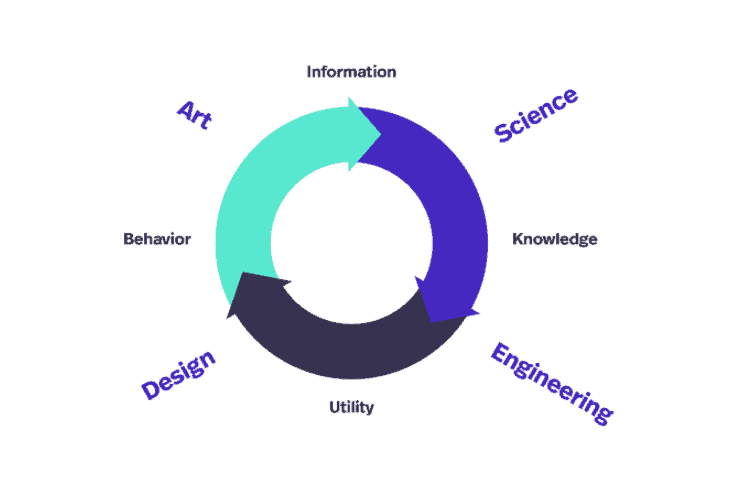The standard user flows that currently dictate our interactions with computers are still quite limited, and are only a few years away from becoming unrecognizable. The process of changing this dynamic has already begun in the form of conversational interfaces. They will soon revolutionize how humans interact with machines. Just as how during the industrial age, we needed to learn how to interact with machine interfaces for driving cars, washing clothes, and ordering products, it is now time for the machines to start learning how to interact with us.
We are all getting used to chatbots in customer service. They can easily, for example, can help to reset your passwords, but then refuse to talk about the US presidential elections. Billions of people send messages every minute of the day and interact on messaging platforms. Teenagers enjoy staying in their social and chat apps to interact with friends and services there. They don’t want to learn how your website works with all its structures, custom search and product categories. So, what’s next?
With a vast addressable customer base and the next wave of evolution in Natural Language Understanding technology, messaging platforms and virtual (personal) assistants are becoming increasingly important as a way for brands to reach out to customers for marketing and sales reasons. Brands want to get personal and truly relevant.

Conversational commerce is a paradigm shift in marketing. It nimbly moves us from selling to helping, from transacting to building a relationship, and from an often-annoying monologue to constructive dialogue.
Rip that user journey off the wall. Think before investing in your website and SEO.
Humans prefer expressing what they feel and desire in their natural language, so conversational commerce technology allows brands to converse with customers in their platform of choice, and therefore takes channel expressiveness, relevancy and personalization to the next level.
Of course, only a naive conversational commerce platform would offer a text-only, rigid service. State-of-the-art platforms are non-linear, proactive, multi-modal and can “talk” to your customers using not only text, but also structures and abstractions learned when dealing with online services – images, maps, forms, buttons, and so on. Responsiveness of your interaction design becomes defined by how the dialog is adapted when a customer is switching between devices – WhatsApp’s forms of interaction are dramatically different from what you can do in a mobile browser.
Conversational flows can both influence buying behavior and encourage repeated purchase. Businesses are now able to reduce friction by reducing the number of steps to a purchase, lowering customer efforts, and learning how to adapt to user preferences in a way that actually helps customers make better purchase decisions. Also, brands can connect with customers on a much deeper level that improves both customer loyalty and satisfaction. This ultimately results in an improved customer experience as well as increases sales.
As the bot ecosystem evolves, even beyond conversational commerce, the number of web and mobile app customers use will decline – they are already proactively shifting attention from various apps to bot ecosystems as bots quickly become the new medium for consumers to reach brands.

What do you need to realize it? Conversational commerce is not “just a chatbot”
This is how we designed and developed our state-of-the-art conversational platform. How is it different from a chatbot? I will summarize the most significant differences below.

End-to-end learnability and flexibility of response generation
Progress in deep learning has changed current approaches to designing conversational interfaces, emphasizing end-to-end learnability and flexibility of response generation.
Given that there usually is not much training data available to develop models for dialog management (and since we don’t have thousands of annotated dialogs at our disposal), we have to be creative and start with systems dominated by smart and scalable yet still deterministic algorithms and gradually transition the control of dialog management over to machine learning.
Integration of neural models into an existing infrastructure, however, can be cumbersome. We responded by developing an approach that enables the usage of neural models to boost the quality of already deployed scripts. This is done by detecting possible inconsistencies during a dialogue and adjusting a response strategy accordingly – something that can be seamlessly integrated into an existing goal-oriented dialogue manager. We achieve this by designing a hybrid methodology that utilizes an attention mechanism, a key component of the current state-of-the-art RNN-based systems, and a formal deductive approach capturing the linguistic structure of a conversation.
SDK support to build custom UI integrations
Very often, complex integration cases require orchestration between an (existing) website and the conversational commerce platform. That is achieved via an SDK delivered to customers who would like to start with advanced dialog flows. For example, in online retail, conversational workflows often start on the website and need to be further handled and supported through messaging platforms. This way, the conversational commerce platform integrates into the website’s front-end to engage customers there using its semantic search and recommendation capabilities and then continues the conversation “offline”.
Proactive conversations
The capability of a conversational platform to initiate conversations instead of only responding to users is important when it comes to follow-up conversations and responding to complex events such as notifying a customer that he or she is required to reschedule an appointment and asking for a convenient time. To be able to do this, the platform must include event processing and triggering features. It’s worth noting, however, that the line between helpful and irritating can be blurry. Such dialog flows therefore must be carefully designed and tested in a limited setting.
This kind of functionality requires not only careful consideration of the negative consequences, but also extensive testing and evaluation.
Rich input and answers
Usually conversational platforms support text-only chats, but sending pictures and other non-textual information is a natural evolution. Moreover, if a messaging platform allows, often it is more natural to use small forms or custom action elements.
Multiple intent recognition
Basic solutions support only one intent per input, so when a user is trying to compound several intents like people usually do in regular conversations, the system will fail to understand it. Think about this simple example:
“I am interested in this t-shirt, but I’m not sure whether it will look good on me.”
Being able to capture and prioritize that a customer is willing to purchase requires a certain style of advice-giving. Failing to have this could lead to dissatisfaction among customers or can even damage your brand.
Information about current context (what was expressed by a person during the current or past conversations) must as well be used to augment intent recognition.
Language generation
Although the field of NLG is not entirely mature and therefore cannot be a robust alternative to human-generated responses in all cases, NLG should be applied to reduce the need for manual supervision. NLG requires structured input, therefore the dialog manager needs to be able to represent each response using one of the existing semantic formalisms.
Human fallback and continuous improvement
Not all conversations will flow perfectly, especially in the very beginning. Therefore, we require a solution able to detect when a conversation “gets stuck” and transfer it to a human. Humans should be able to pass things back to the machine when the request has been clarified and consequently adjust and re-train the flow to include this new “bit of wisdom” into new conversations.
Reasoning
Semantic enrichment and reasoning are necessary to leverage existing (or newly created) internal and external knowledge bases, in order to drive relevance, specificity, and contextuality of conversations. Internal knowledge bases are typically constructed from existing information sources or databases and stored using a formal semantic representation. Dialog manager triggers enrichment with semantics using the available knowledge base and the reasoning engine augments the dialog state handling and response generation.
It is easy to get lost. Not every conversational commerce platform and its implementation approach will work for you. Why not?
- Naive approach. For example, replacing your existing website with a chat interface.
- Not so smart. Most bot solutions are not really smart and self-learning, but programmed in conventional if-then-else.
- No clear use-case. We – business, designers and techies – are still looking for the right use-cases. Thus, there is a lot of necessary and careful experimenting required to get it right.
- Not integrated. Many conversational interfaces are stand-alone and not connected to existing business systems, hence fail to prove themselves useful.
- Tech-only thinking. Conversational customer experience must stem from a well-(re)designed customer journey, applied only where relevant and value adding.
- No Human fallback. Your customers get annoyed very quickly and your new conversational approach becomes an expensive disappointment.
Firmshift and Edenspiekermann have joined forces to lead the way in the new generation of solutions connecting brands with their customers. We believe in a profound and sincere relationship between business, science, engineering, design and art. We live that promise.

Check out our conversational commerce platform reason.ai: http://reason.ai.
Are you a ‘believer’ in conversational commerce too? Do you plan to use a conversational commerce platform? Will you be exploring the possibilities for AI and NLP in your organization soon? Speak with us. We’d love to get the conversation started.
For more insights like these, get your Data Natives ticket here.
Like this article? Subscribe to our weekly newsletter to never miss out!





